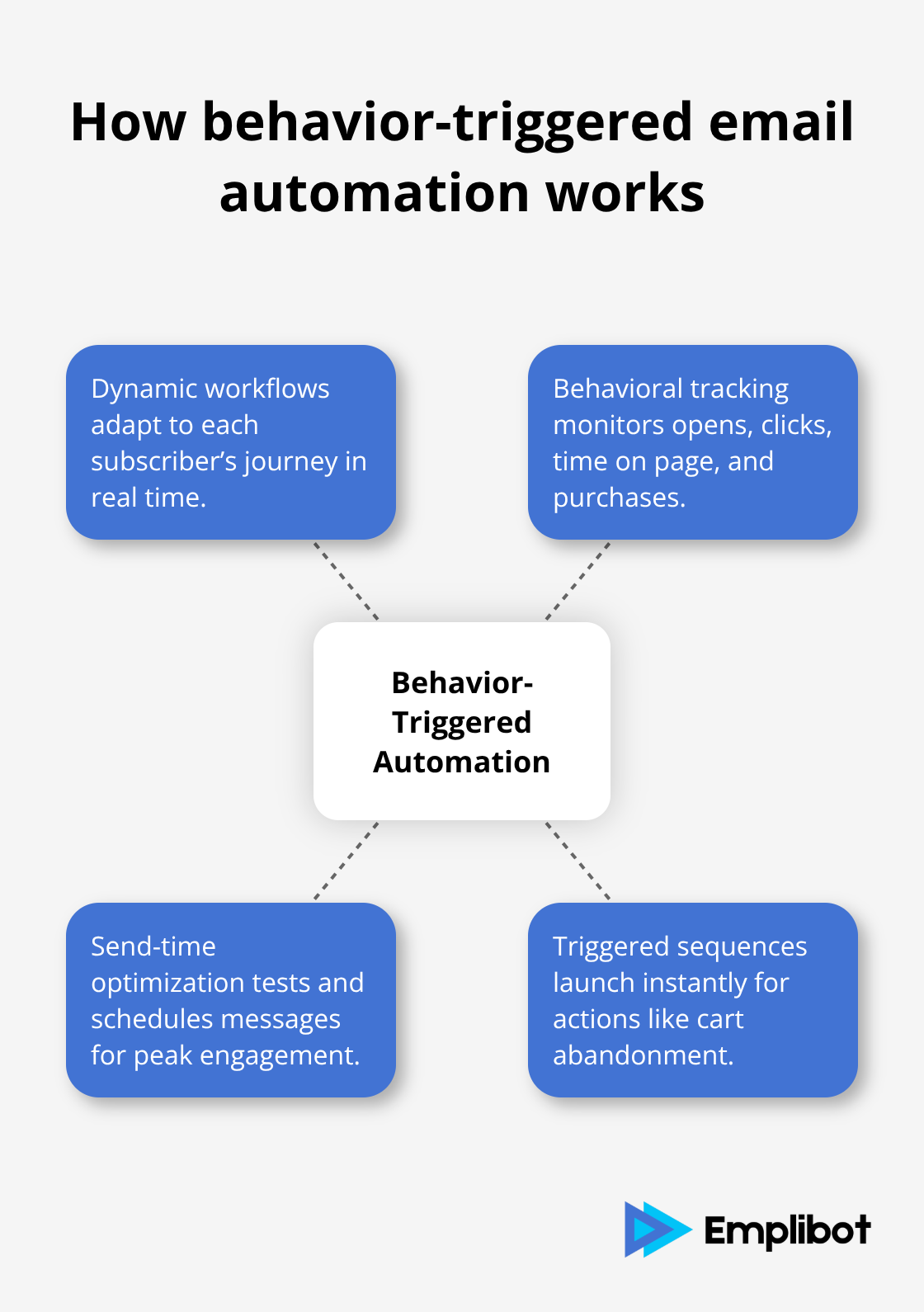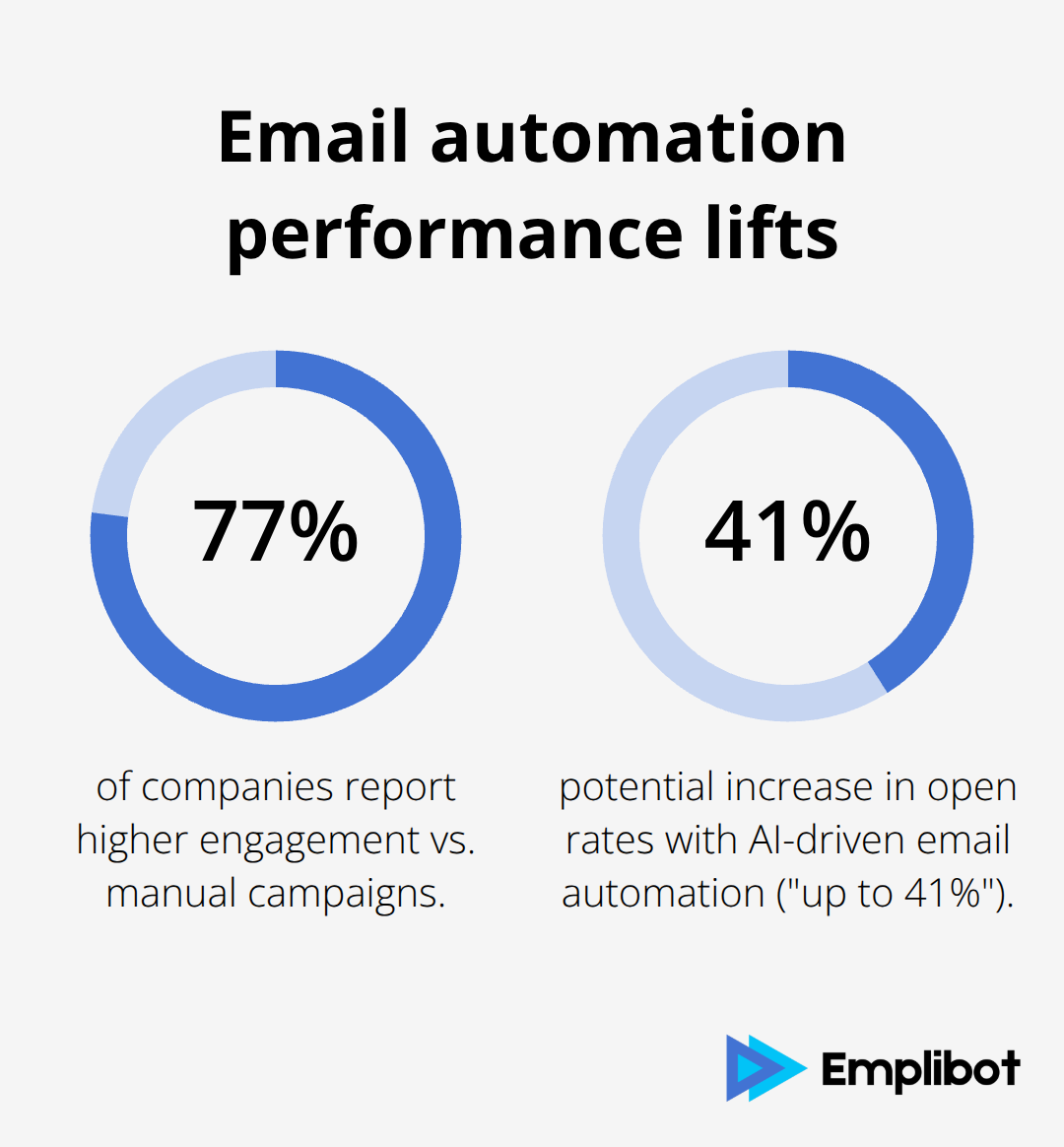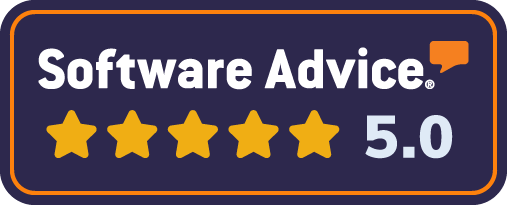Email marketing automation has become the backbone of successful digital campaigns, with 77% of companies reporting higher engagement rates compared to manual campaigns.
We at Emplibot understand that choosing the right automated email marketing software can transform your business growth in 2025.
This guide breaks down the top platforms, key features, and selection criteria to help you make an informed decision for your marketing strategy.
Contents
ToggleWhat Does Email Marketing Automation Actually Do
Automated email marketing software transforms your email campaigns from manual, one-size-fits-all messages into intelligent, behavior-driven communications that respond to customer actions in real-time. The software monitors subscriber behavior like website visits, purchase history, and email engagement, then automatically sends targeted messages based on these triggers. For example, when someone abandons their shopping cart, the system immediately sends a recovery email sequence without any manual intervention. This technology processes millions of data points to determine the optimal send times, subject lines, and content for each individual subscriber.
Behavior-Triggered Campaigns Replace Guesswork
Traditional email marketing relies on scheduled broadcasts sent to entire lists, regardless of individual subscriber preferences or actions. Automated systems eliminate this spray-and-pray approach by creating dynamic workflows that adapt to each person’s journey. The software tracks over 50 behavioral indicators (including email opens, link clicks, time spent on pages, and purchase patterns) to create personalized customer journeys. Sending emails at different times helps figure out when open rates, click through rates, and conversions are highest for your business.

Real-Time Personalization Drives Revenue Growth
Modern automation platforms use artificial intelligence to analyze subscriber data and predict the most effective content for each individual. This goes far beyond inserting a first name into the subject line – the software customizes product recommendations, send times, and even email frequency based on past behavior. Companies that use AI-driven email automation can increase email open rates by up to 41% in certain industries. The technology continuously learns from campaign performance and automatically optimizes future sends without requiring constant manual adjustments from marketing teams.
Advanced Segmentation Creates Targeted Experiences
Automation platforms segment your audience into highly specific groups based on demographics, behavior, and engagement patterns. These segments receive tailored content that matches their interests and stage in the customer journey. Over 90% of marketers observe improved performance through segmentation (making it a key tactic for success), while personalized subject lines can improve open rates by 10-14% across various industries. The software automatically updates these segments as subscriber behavior changes, maintaining relevance without manual list management.
Now that you understand how automation transforms basic email campaigns into sophisticated marketing machines, let’s examine the specific features that separate automated platforms from traditional email tools.
Which Platforms Lead Email Automation in 2025
Mailchimp dominates the small business segment, but their recent feature restrictions make it less attractive for companies that want to grow. Their free tier now limits users to just 500 subscribers and 1,000 emails monthly, while automation features require paid upgrades that start at $13 per month. Despite these limitations, Mailchimp excels at simplicity and offers solid deliverability rates. Small businesses appreciate their drag-and-drop email builder and basic automation workflows, though advanced segmentation capabilities lag behind competitors. Industry benchmarks show average open rates ranging from 27.34% to 40.55% depending on sector.
ActiveCampaign Sets the Automation Standard
ActiveCampaign emerges as the clear winner for businesses serious about email automation, earning recognition as the best email marketing tool for 2025. Their platform processes complex behavioral triggers and creates sophisticated customer journeys that adapt based on engagement patterns. The software tracks over 50 behavioral indicators and uses this data to optimize send times automatically. Companies that use ActiveCampaign report significantly improved performance compared to basic scheduled campaigns. Their pricing starts at $15 monthly for 500 contacts, which makes advanced automation accessible to mid-sized businesses. The platform integrates seamlessly with over 870 third-party applications and allows businesses to connect their entire marketing stack. Good email benchmarks include open rates around 42.35% and click-through rates from 0.77% to 4.36%.
HubSpot Combines CRM with Email Power
HubSpot offers the most comprehensive solution when it combines email marketing with full CRM capabilities, supporting up to 1 million subscribers with 2,000 monthly emails on their free plan. Their unified platform eliminates data silos between marketing and sales teams and provides real-time customer profiles that enhance targeting precision.

Marketing automation helps identify and nurture leads across multiple channels, with companies typically recovering software costs within six months through improved lead management. HubSpot users benefit from integrated analytics that track the complete customer journey from first email open to final purchase, though the platform requires a steeper learning curve compared to standalone email tools.
Specialized Platforms Fill Niche Requirements
Several platforms target specific business needs beyond general automation. Omnisend specializes in ecommerce automation and features unique capabilities like cart recovery and product recommendations (making it ideal for online retailers). Klaviyo integrates seamlessly with platforms like Shopify and offers straightforward pricing based on contact size and sending volume. Beehiiv supports monetization with features like paid subscriptions and recommendations, which targets content creators and newsletter publishers specifically.
The right platform depends on your specific business requirements, budget constraints, and technical expertise. Next, we’ll examine the key factors you should evaluate when selecting your email automation solution.
What Size Business Needs Which Features
Your subscriber count determines which platforms can handle your volume without breaking your budget or hitting artificial limits. Companies with under 1,000 subscribers should prioritize platforms that offer generous free tiers and room for growth. HubSpot leads this category with support for up to 1 million subscribers and 2,000 monthly emails on their free plan, while MailerLite provides 12,000 emails monthly for up to 1,000 subscribers.
Businesses that send over 50,000 emails monthly need enterprise-grade deliverability, which makes platforms like ActiveCampaign or Klaviyo necessary investments. Email volume directly impacts your monthly costs since most platforms charge based on subscriber count rather than email sends (though Brevo uses a pay-as-you-go model that charges by email volume instead).
Integration Requirements Drive Platform Selection
Your existing software stack determines which email automation platform will work seamlessly with your current operations. ActiveCampaign integrates with over 870 third-party applications, which makes it the top choice for businesses with complex tech stacks that include CRM systems, ecommerce platforms, and analytics tools.
Companies that use Shopify need platforms like Klaviyo that sync product data and purchase history automatically, while WordPress users benefit from direct integrations that track website behavior. Marketing automation helps align marketing and sales teams through real-time customer profiles, but only when your email platform connects properly with your CRM and sales tools.
Test integration capabilities during free trials since poor data sync can destroy campaign effectiveness.
ROI Calculations Reveal True Platform Value
Email marketing generates an average ROI of $36 for every dollar spent according to multiple industry studies, but platform costs vary dramatically based on features and subscriber limits. ActiveCampaign costs $15 monthly for 500 contacts with full automation, while Mailchimp charges $13 monthly for basic automation with the same subscriber count.
Companies typically recover marketing automation software costs within six months through improved lead management (which makes higher-priced platforms worthwhile for businesses that can utilize advanced features). Calculate your potential revenue per subscriber and multiply by expected growth to determine which pricing tier makes financial sense.
Automated emails achieve 2,361% better conversion rates compared to scheduled campaigns according to 2023 data, which justifies premium platform costs for businesses ready to implement sophisticated workflows.
Final Thoughts
Automated email marketing software transforms business communications from manual broadcasts into intelligent, behavior-driven campaigns that generate 2,361% better conversion rates than traditional methods. The technology processes millions of data points to deliver personalized messages at optimal times. This creates customer experiences that drive real revenue growth.
ActiveCampaign leads the market for advanced automation features, while HubSpot excels at combining email marketing with comprehensive CRM capabilities. Small businesses benefit from platforms like MailerLite that offer generous free tiers and room for growth. Your choice depends on subscriber volume, integration requirements, and budget constraints (with companies typically recovering their software investment within six months through improved lead management).
Start with a free trial to test automation workflows and integration capabilities with your existing tools. Focus on simple triggered campaigns like welcome sequences and abandoned cart recovery before building complex customer journeys. We at Emplibot help businesses scale their content marketing efforts through automated WordPress blogs and social media distribution, creating a complete marketing system that nurtures leads across multiple touchpoints.










